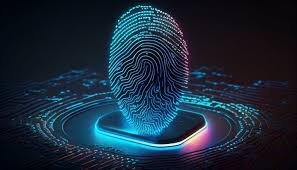Biometric Authentication: The Future of Secure Identification
In an increasingly digital world, the need for secure and reliable authentication methods has never been greater. With cyber threats evolving and traditional password systems showing their limitations, biometric authentication has emerged as a promising solution. In this article, we’ll dive into the concept of biometric authentication, its types, advantages, challenges, and its future in a tech-driven society.

What is Biometric Authentication?
Biometric authentication refers to the use of unique biological traits to verify a person’s identity. These traits can range from fingerprints, facial recognition, and voice patterns to more advanced methods such as iris scans and DNA recognition. Unlike traditional authentication systems that rely on something you know (like a password or PIN) or something you have (like a security card), biometrics rely on something you are, making it a more secure and personalized method of authentication.
The premise behind biometric authentication is simple: the biological data of each individual is unique and difficult to replicate. This makes it an ideal tool for verifying identities in sensitive transactions, such as accessing bank accounts, securing devices, or entering high-security areas.
Types of Biometric Authentication
There are several forms of biometric authentication, each with its own strengths and weaknesses. Some of the most common methods include:
- Fingerprint Recognition: One of the oldest and most widely used forms of biometric authentication, fingerprint recognition scans the ridges and valleys on a person’s fingertips. Every individual has a unique fingerprint pattern, which makes it a reliable method of verification. Modern smartphones and laptops often use fingerprint sensors as a primary form of authentication.
- Facial Recognition: This method analyzes the unique features of a person’s face, such as the distance between the eyes, the shape of the jawline, and the contours of the cheekbones. It has become increasingly popular in recent years, with applications ranging from phone unlock features to airport security. Advances in AI and deep learning algorithms have made facial recognition faster and more accurate.
- Voice Recognition: By analyzing the tone, pitch, and rhythm of a person’s voice, voice recognition software can identify a speaker. This method is commonly used in customer service applications, such as verifying a person’s identity over the phone. While voice recognition can be quite effective, it’s vulnerable to background noise and mimicry, which can be a limitation.
- Iris Scanning: Iris scanning uses the unique patterns in the colored part of the eye to identify individuals. Since iris patterns are formed early in life and don’t change over time, they are considered highly accurate. This form of biometric authentication is typically used in high-security settings, such as government buildings or border controls.
- Hand Geometry: This method measures and analyzes the shape of a person’s hand, including the length and width of fingers. While not as commonly used as other forms of biometric identification, it is still employed in certain applications, such as access control systems in secure facilities.
- DNA Recognition: Although still in the early stages of development, DNA-based authentication is a highly secure method of verification. It involves analyzing specific genetic markers to confirm an individual’s identity. While accurate, the technology is costly and time-consuming, making it impractical for everyday use at the moment.
Advantages of Biometric Authentication
Biometric authentication offers several key advantages that make it an attractive alternative to traditional authentication methods.
- Security: Biometrics are inherently difficult to fake or steal. Unlike passwords or PINs, which can be guessed, stolen, or cracked, biometric data is unique to each individual. This makes biometric authentication far more secure than traditional password-based systems.
- Convenience: With biometric authentication, users don’t need to remember complex passwords or carry around physical tokens. The process is seamless and often quicker than entering a password. For instance, unlocking a phone with a fingerprint or face scan takes only a few seconds, providing a user-friendly experience.
- Reduced Fraud: Since biometric data is unique, it significantly reduces the chances of impersonation. This is especially crucial in industries like banking, healthcare, and government services, where identity theft can have serious consequences.
- Non-Transferability: Unlike passwords or security tokens, biometric data cannot be shared or transferred. For example, it’s impossible to lend someone your fingerprint or voice, making biometric authentication a more secure and personal method of access.
- Versatility: Biometric authentication can be applied in a wide range of contexts. From unlocking smartphones and laptops to securing financial transactions and ensuring airport security, biometrics have diverse applications that enhance both user experience and security.
Challenges of Biometric Authentication
While biometric authentication offers many benefits, it is not without its challenges. Some of the most prominent issues include:
- Privacy Concerns: The use of biometric data raises significant privacy issues. Collecting and storing biometric information could potentially expose individuals to identity theft if that data is hacked or misused. Governments and companies that collect biometric data must implement strict security protocols to safeguard this sensitive information.
- False Positives and Negatives: No biometric system is perfect. There are instances where a legitimate user might be incorrectly denied access (false negative) or where an unauthorized user is allowed access (false positive). While biometric systems have become more accurate over time, errors can still occur, particularly with low-quality sensors or unfavorable environmental conditions.
- Cost: High-quality biometric systems, especially those used for facial recognition or iris scanning, can be expensive to implement. For large organizations or government agencies, the costs of upgrading systems to accommodate biometric authentication could be a barrier to adoption.
- Accessibility Issues: Biometric systems may not be accessible to everyone. For example, individuals with certain disabilities may find it difficult to use certain biometric methods. Moreover, changes in physical appearance, such as scarring or aging, may affect the reliability of some biometric systems.
- Data Security: The security of biometric data is a major concern. If biometric data is compromised, it cannot be changed like a password. This permanent nature of biometric data makes its protection all the more critical. Companies and governments must implement robust encryption techniques and secure storage solutions to prevent breaches.
The Future of Biometric Authentication
The future of biometric authentication looks promising, with new technologies emerging to address current limitations. As artificial intelligence (AI) and machine learning continue to evolve, biometric systems are becoming more accurate and efficient. For instance, AI-powered facial recognition systems can now work in diverse lighting conditions and even identify people wearing masks.
In the coming years, we are likely to see even more innovative applications of biometrics. For instance, some researchers are exploring the use of gait recognition (identifying individuals by the way they walk) and even behavioral biometrics (analyzing patterns in user behavior such as typing speed or mouse movements).
The integration of biometrics with multi-factor authentication (MFA) is also gaining traction. By combining biometrics with other authentication methods, such as passwords or security tokens, MFA adds an additional layer of security, ensuring that even if one factor is compromised, the others will still protect the user’s data.
Conclusion
Biometric authentication changes the game in the world of security. It offers a unique, secure, and convenient method of verifying identity, and it will become a cornerstone of modern authentication systems. While challenges related to privacy, accuracy, and accessibility remain, the future looks bright as technology advances and solutions to these problems emerge. As we continue to move toward a more digital society, biometric authentication will play an increasingly important role in keeping our data and identities safe.


